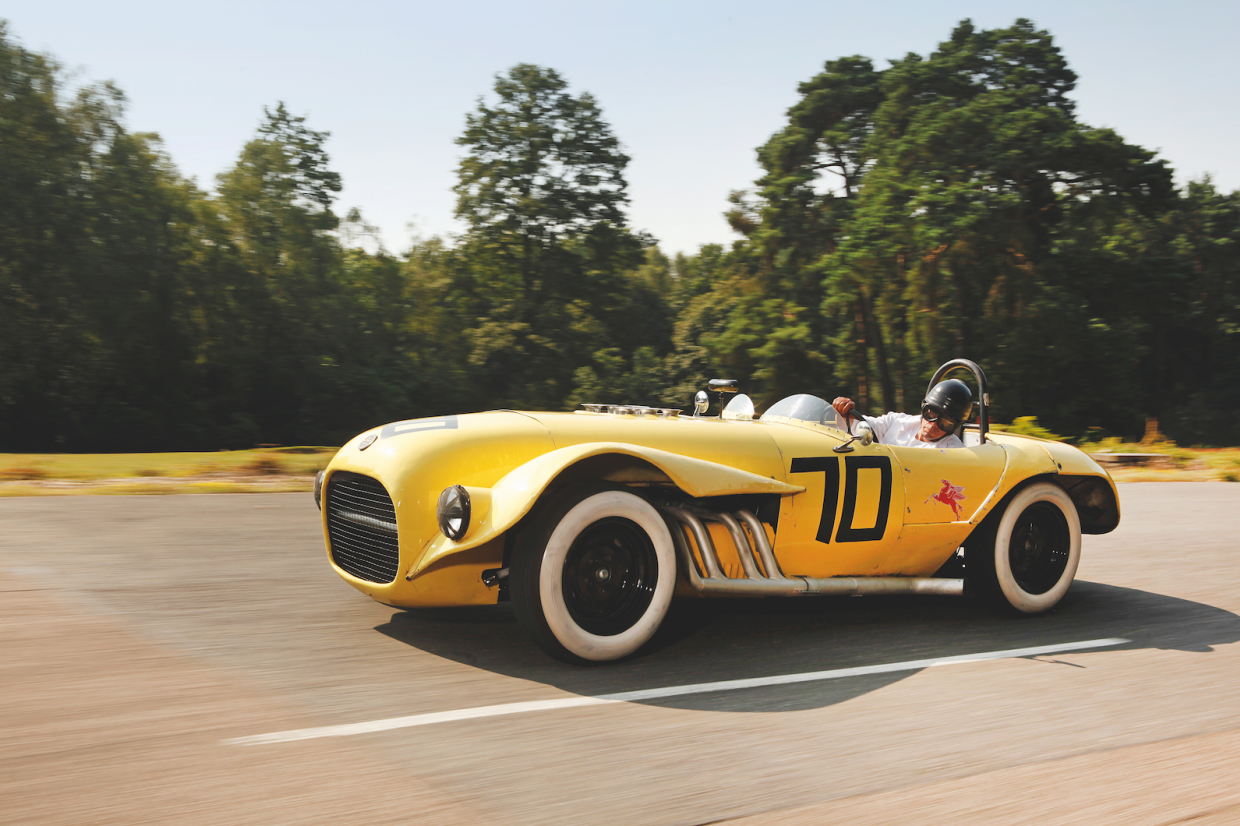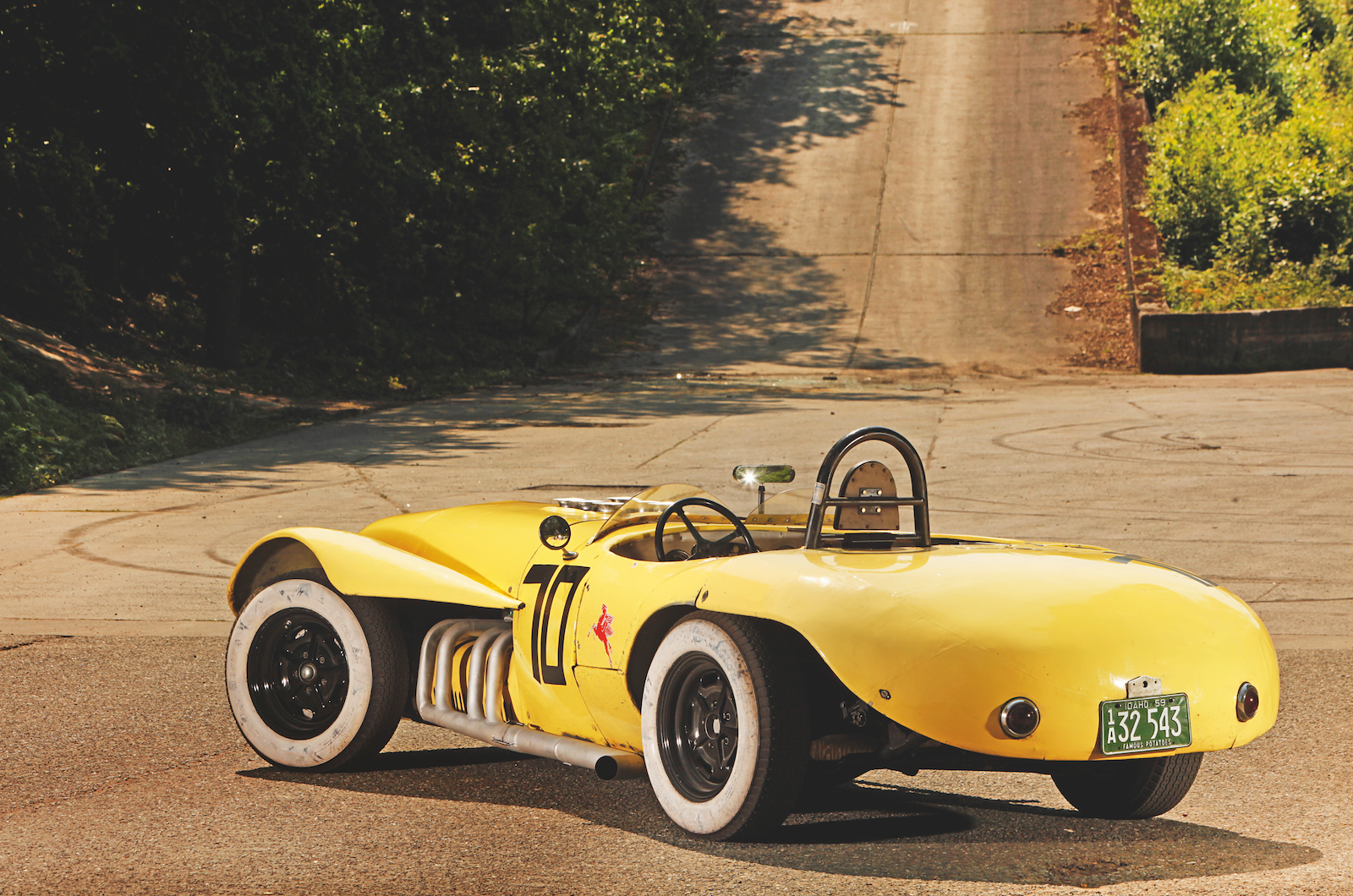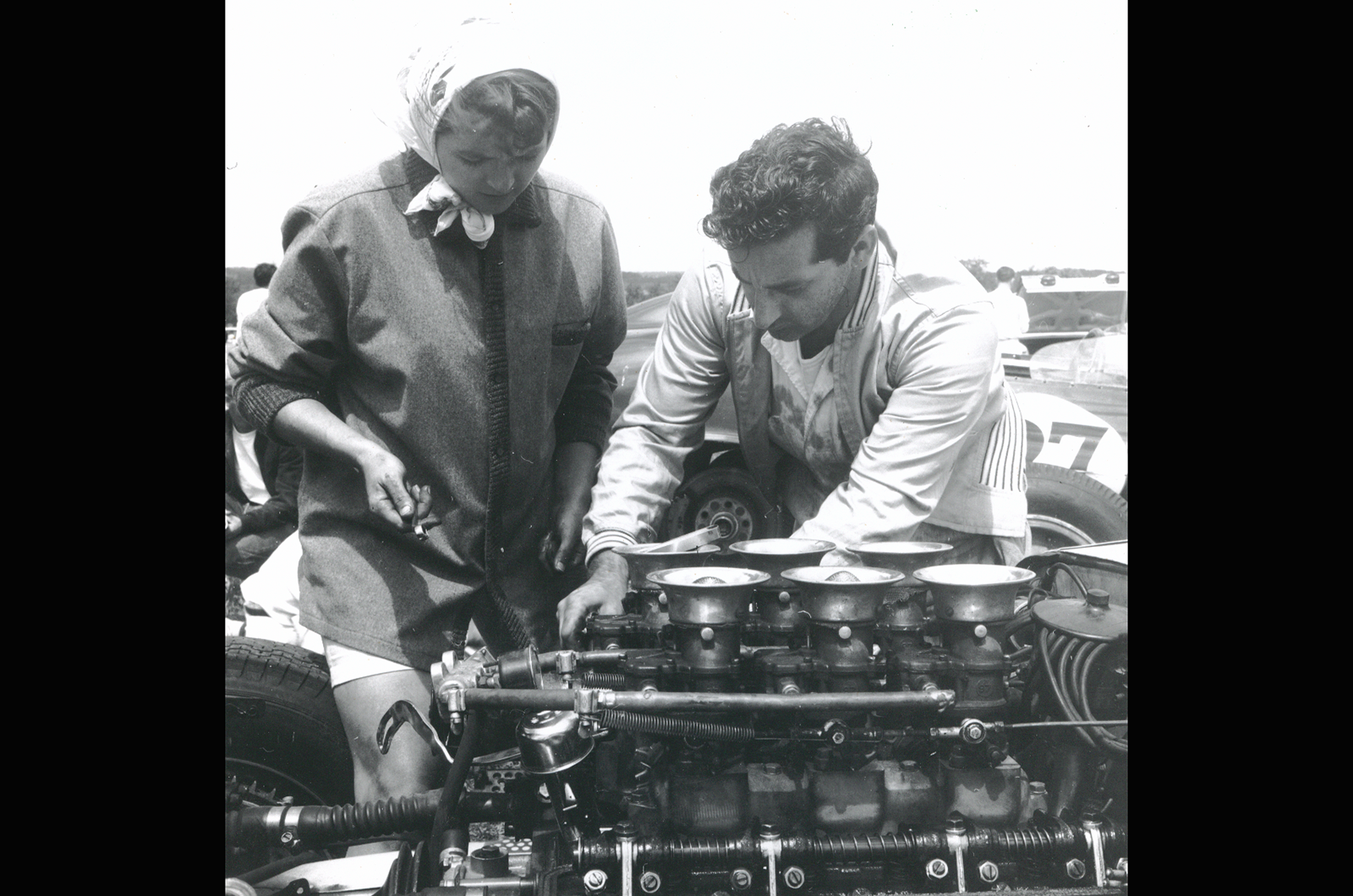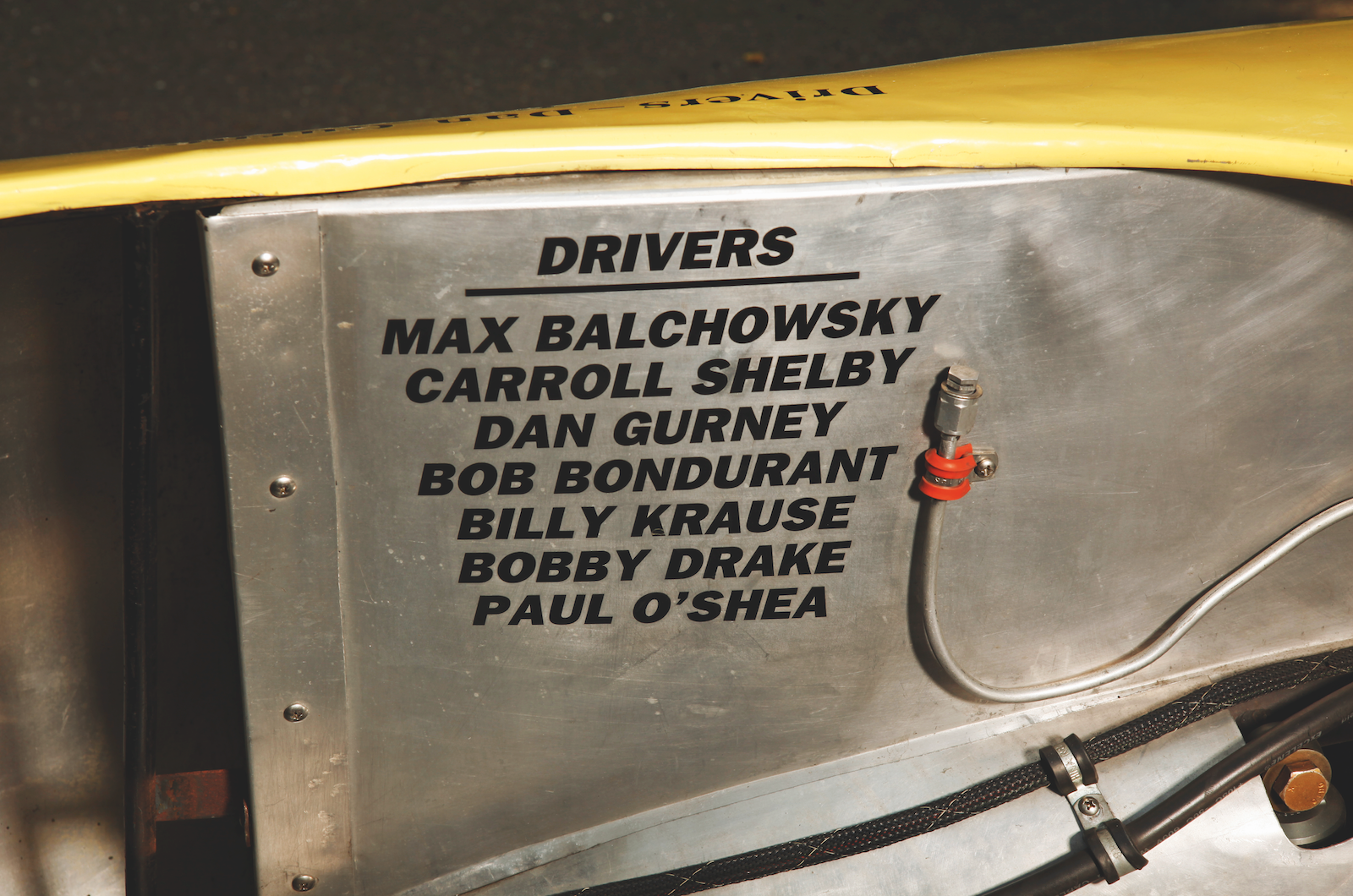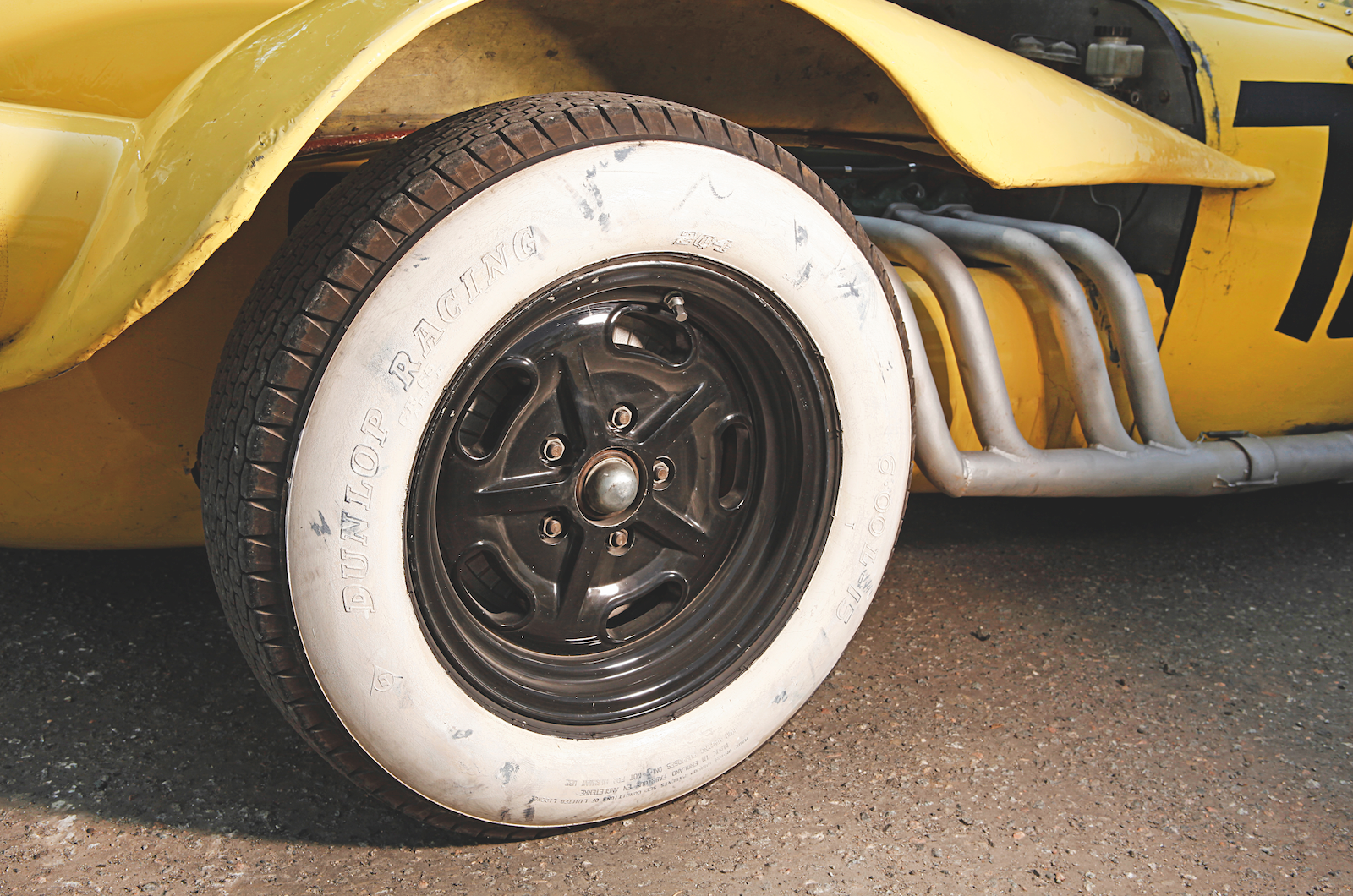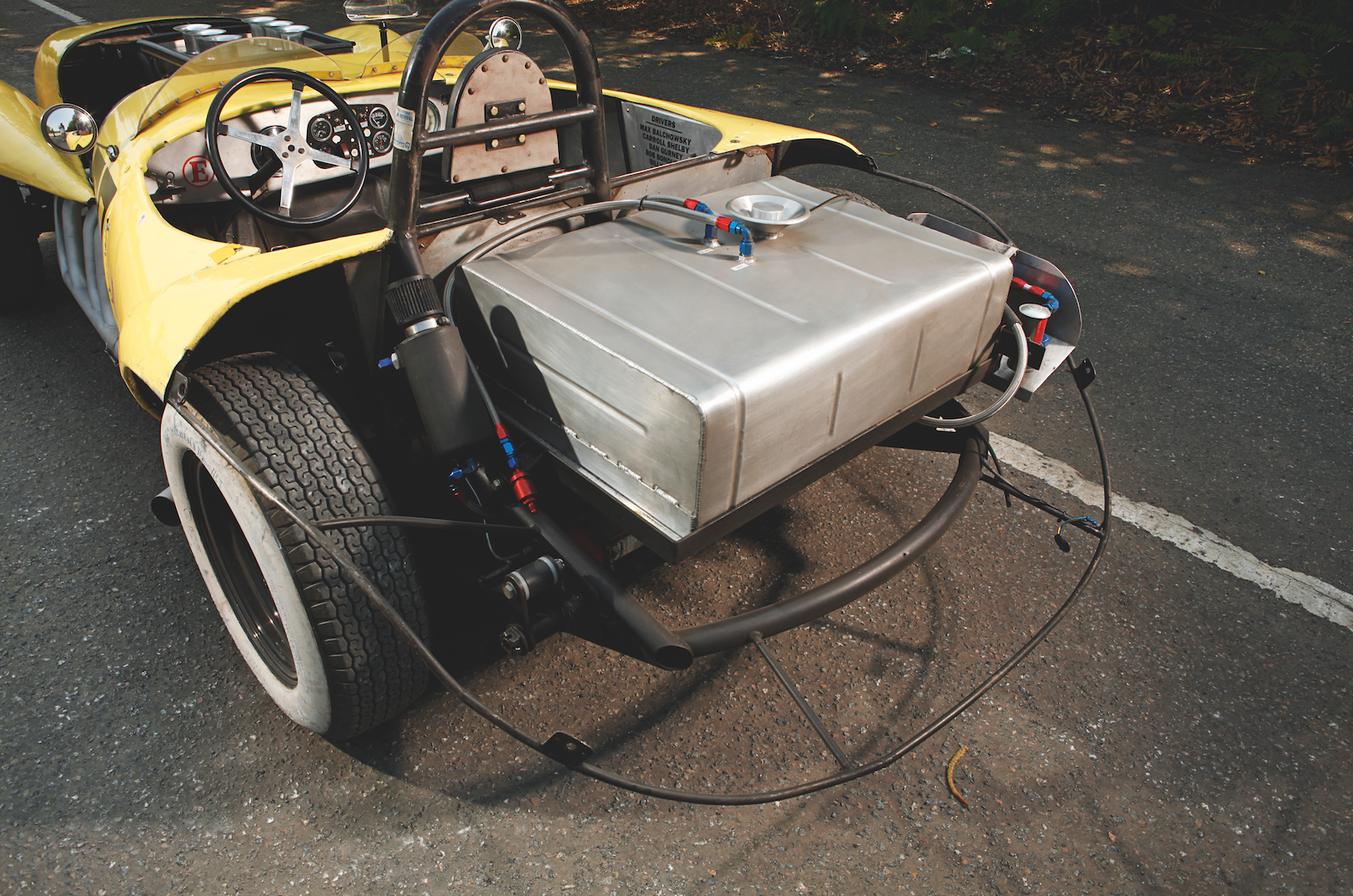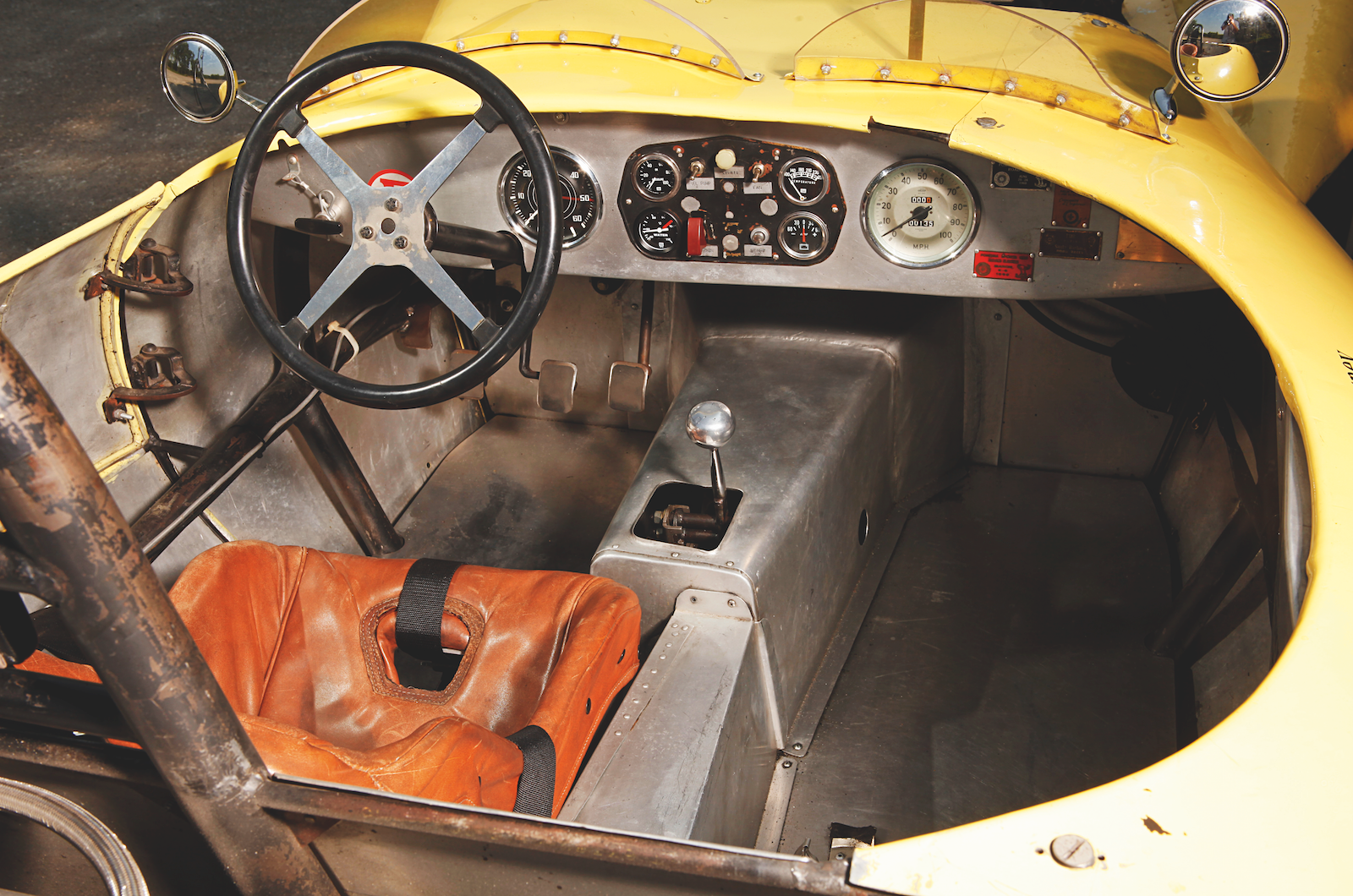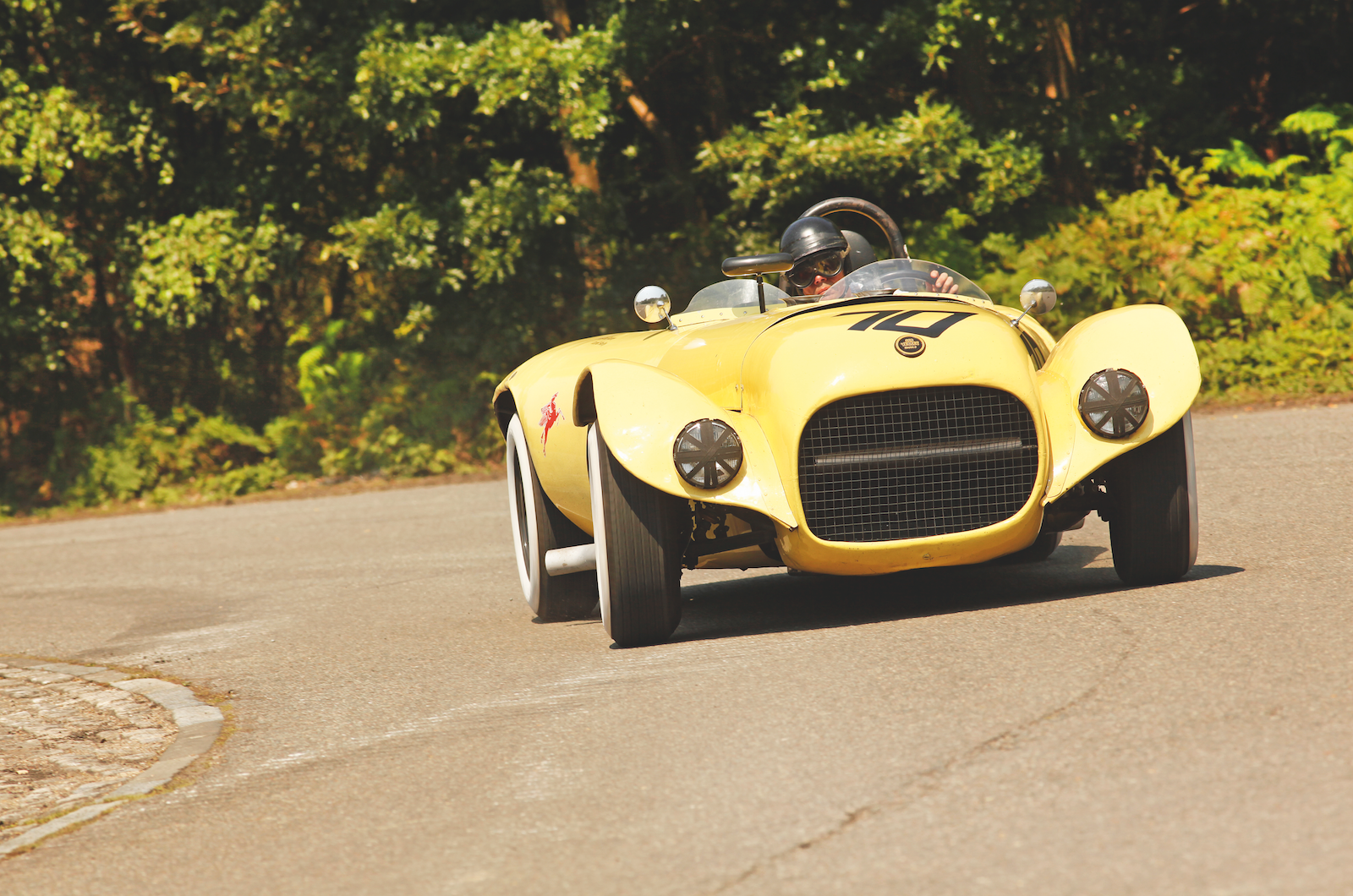Having eagerly read about Balchowsky’s specials and seen the car in 1985, it was a long-held ambition to get behind the wheel of this fabled Ferrari-beater. And it didn’t disappoint. Step over the door, settle into the snug leather-trimmed bucket seat, and the view ahead over the bonnet, with those six trumpets penetrating the battered panel, evokes a wealth of images.
Even before that rude rumble of the Buick engine erupts through the unsilenced side-pipes, you’re imagining Drake chasing Krause’s Birdcage through the desert turns at Riverside with Pabst’s Scarab filling the rear-view mirror. Such rich history is ingrained into this brutish old racer, and you can’t help but feel it.
The well-braced chassis tubing surrounds the cockpit space, while the bare-metal cliff-face dash panel holds a motley selection of gauges and switches, with historic plaques for Pomona, Palm Springs and Santa Barbara tucked under the body to the right.
The rev counter is from an XK while the Morris 100mph speedometer is another Balchowsky joke. The driving position – with high, bent legs, pendulum pedals and a four-spoke sprint-car-style steering wheel – all bring to mind a well-built Ford hot rod.
The gearbox is a Muncie T-10 ‘rock crusher’. It features a chunky action but, with deft double-declutching, provides a slick change. It perfectly matches the grunt of the Buick Nailhead powerplant and, with so much torque on tap, you really only need third and fourth once you’re rolling. Being solid-mounted, that engine vibrates right through the chassis when it’s started up.
Clockwise from top: Walsh follows in the wheeltracks of his heroes; handling is superb; Balchowsky raced it on road tyres
The car is a hoot to drive. Despite shaggy appearances, it feels very strong, rigid, together. The performance punch is as potent as in a 289 Cobra but, matched to beautifully weighted steering and impressively balanced handling, it inspires.
After a few fast laps of our test track, I feel really confident, with the drum brakes being the only drawback. As the speeds build, the pedal travel gets ever deeper. It’s easy to see why Nagamatsu has had a few moments at the Goodwood chicane because the mighty performance soon outstrips the stopping power.
McClurg has tested the car at Donington Park, where he used only third and fourth gears, and he too was impressed by its neutral character. The torque from 1000rpm is neck-snapping, and when the secondary Strombergs feed in, there’s an extra push through the mid-range up to the 6000rpm limit.
Like its canine Disney namesake, Old Yeller is friendly old thing, and it had me whooping all around the lap. I’ll wager that Shelby’s guest drives inspired the idea of the Cobra but, despite the body’s ungainly looks, this has a better, more sorted chassis.
Images: Tony Baker, LAT Photographic
Enjoyed this? It’s one of more than 30 fascinating articles in our American Classics collectors’ edition magazine. With everything from pre-war Fords to Shelby legends to Chevy Corvettes to be found within its 196 premium pages, it’s a must for all fans of US automobiles. Find out more and order your copy here
READ MORE
Mopar reunion: driving the legendary Super Bee and Road Runner
Is the NSU Ro80 the greatest saloon ever made?
Meet the ‘Ghost’ E-type: Jaguar’s missing link
The unholy trinity: Bugatti Chiron vs Veyron vs EB110
Mick Walsh
Mick Walsh is Classic & Sports Car’s International Editor
